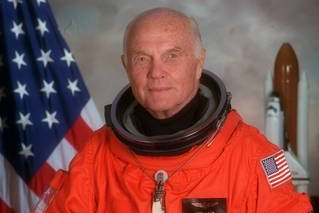Astronaut corps was formed to penetrate the unknown. Not knowing what to expect, doctors and psychologists determined to do everything possible to know their subjects, so as to give America the highest possible odds on bringing our men back from outer space alive. They knew the world would be watching.

The trainers over-prepared. Describing the thoroughness of the testing, John Glenn said, “…they made every kind of measurement and did every kind of test on the human body, inside and out, that medical science knew of or could imagine. They drew blood, took urine and stool samples, scraped our throats, measured the contents of our stomachs, gave us barium enemas, and submerged us in water tanks to record our total body volume.
“They shone lights into our eyes, ears, noses, and everywhere else. They measured our heart and pulse rates, blood pressure, brain waves and muscular reactions to electrical current. Their examination of the lower bowel — done with a sigmoidal probe we nicknamed the steel eel — was the most uncomfortable procedure I had ever experienced. Wires and tubes dangled from us like tentacles from jellyfish. Nobody wanted to tell us what some of the stranger tests were for.”
“The tests at Wright-Patterson [in Ohio] were more familiar. They subjected us to the kinds of stresses test pilots could be expected to endure, heightening some of them in an attempt to simulate the thin environment of space. Again, doctors were guessing. They injected cold water into our ears to create a condition called nystagmus, in which you can’t keep your eyes focused on one spot, then measured how long it took us to recover.
“They measured our body fat content and rated our body types as endomorphic, ectomorphic, or mesomorphic. They inserted a rectal thermometer, sat us in heat chambers, ran the temperature up 130 degrees Fahrenheit, and clocked the rise in our body temperature and heart rate. We walked on treadmills, stepped repeatedly on and off a twenty-inch step, and rode stationary bicycles. We blew into tubes that measured our lung capacity and held our breath as long as we could. We plunged our feet into buckets of ice water while doctors took our blood pressure and pulse measurements. We sat strapped in chairs that shook us like rag dolls. We were assaulted with sounds of shifting amplitudes and frequencies that made our flight suits quiver and produced sensations in our bones.
“We endured blinking strobe lights at frequencies designed to irritate the nervous system. We entered an altitude chamber that simulated sixty-five thousand feet of altitude, with only partial pressure suits and oxygen. We sat in an isolation chamber to see how we might endure the vast blackness and silence of space. All the while sensors were plastered on our heads and bodies recorded our reactions.”
“The isolation chamber was simply a dark, sound-proof room. A technician led me in, seated me at a desk, and turned off out the lights when he left. I had no idea if I would be there for fifteen minutes or fifteen hours. I knew the easiest way to make the time pass would be to put my head down and go to sleep. But I suspected the doctors wanted mental alertness. After a while, I opened the desk drawer and found a writing tablet. I had a pencil in my pocket. ‘Will attempt to keep a record of the run,’ I wrote on the first page.
“Before I was through I had scrawled eighteen pages in utter darkness, keeping track of each line by moving my finger on the page. I wrote down the ways I could think of to pass time in the dark, including exercising, changing clothes, and making a list of as many things as possible before I forgot what I had listed first.”
Source: John Glenn: A Memoir, pages 291-294.


Recent Comments